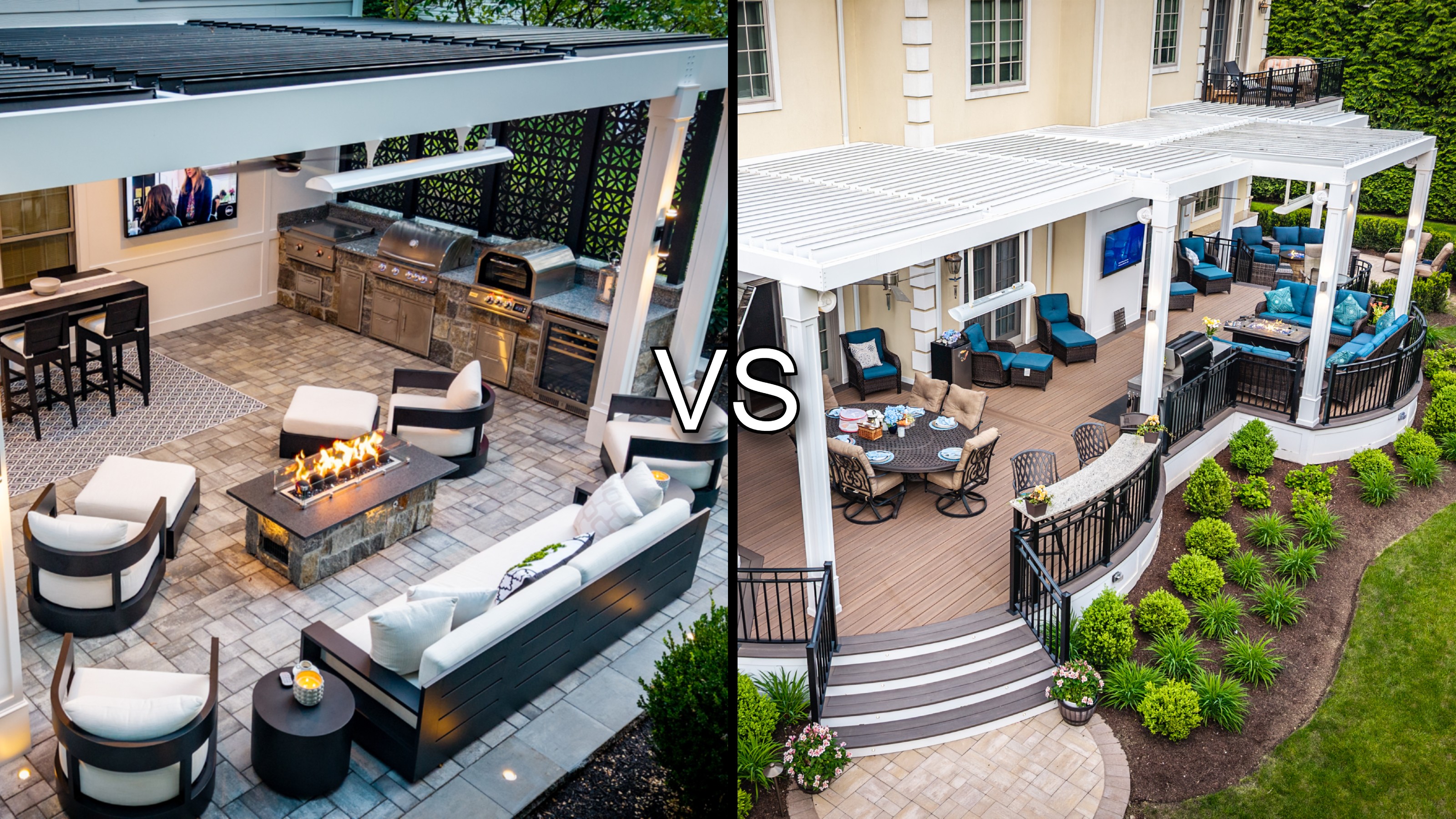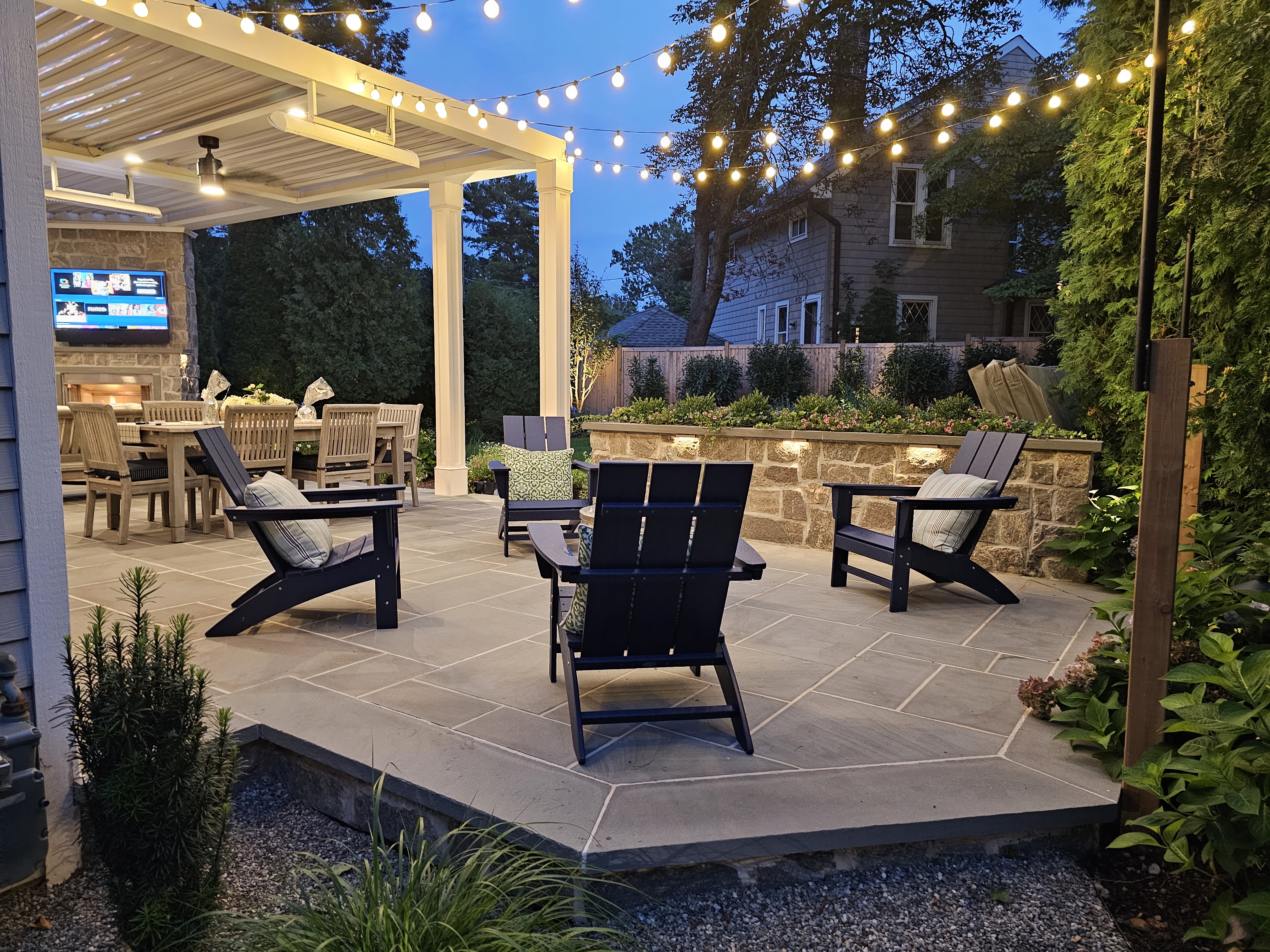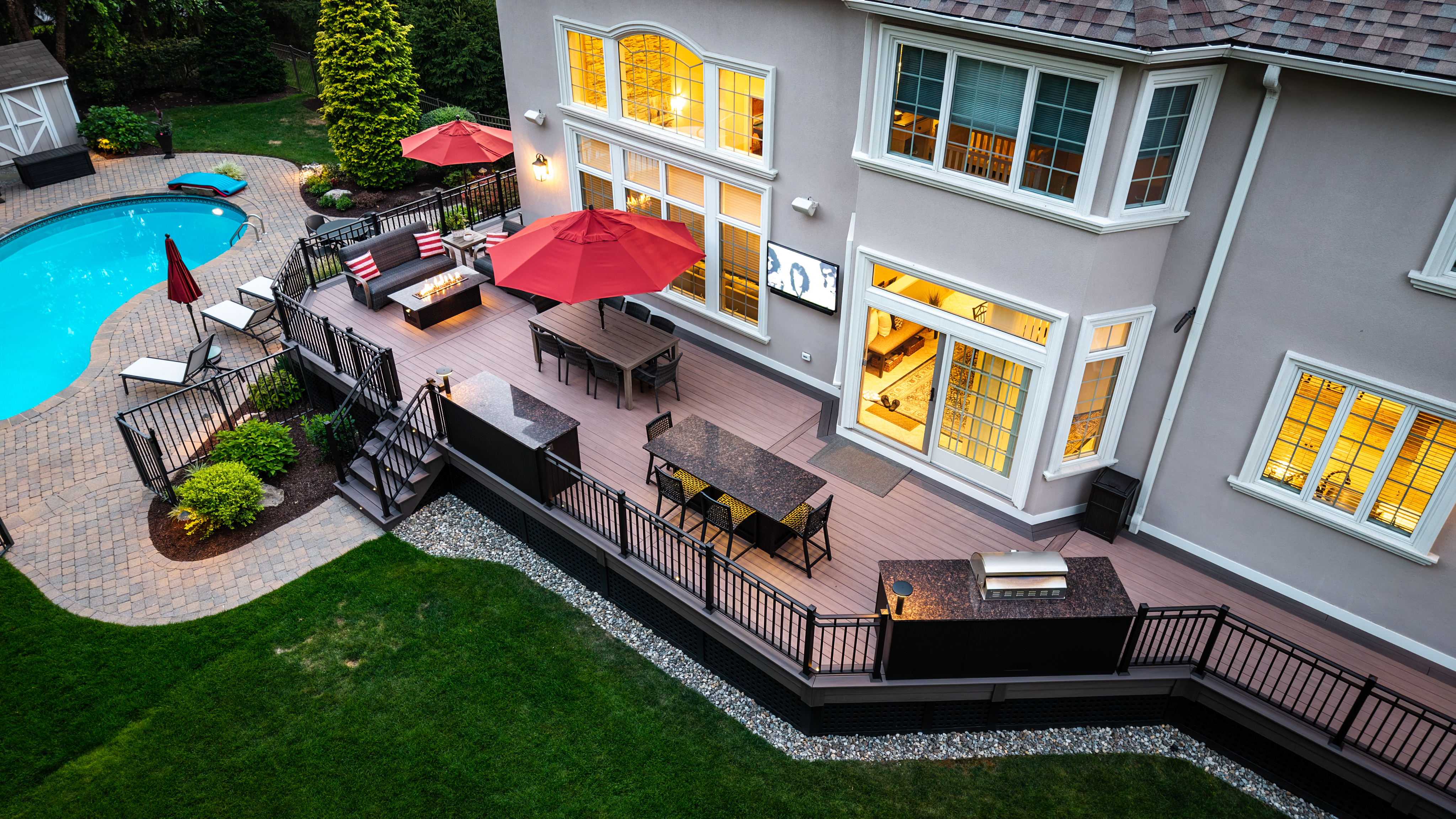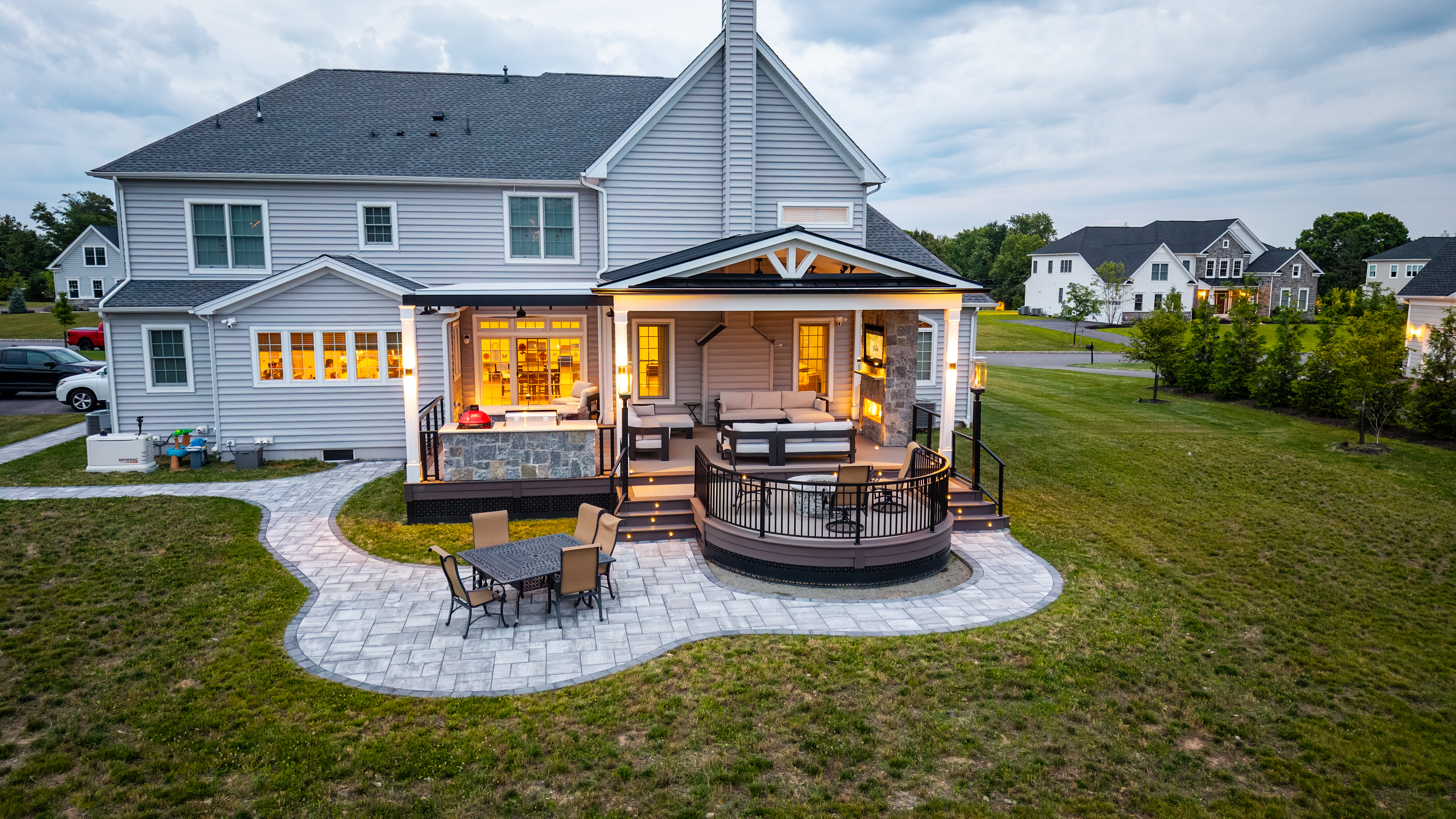

When planning an outdoor space, cost is one of the first things homeowners want to understand. And for many, it feels like common sense: patios must be the more expensive option. After all, they’re built with stone, concrete, or pavers—materials that look heavy, permanent, and high-end. Decks, on the other hand, seem simpler, just a platform raised off the ground with boards on top.
But first impressions can be misleading. The real costs of building and maintaining each option go deeper than what you see on the surface—and that’s where the surprises start.

At first glance, patios project an image of cost. They’re built from materials that look and feel substantial—stone, brick, pavers, or poured concrete. Those surfaces are solid underfoot and carry the weight of permanence, which naturally makes them seem like the pricier choice.
There’s also the way patios are perceived in landscape design. A sprawling hardscape feels like a luxury upgrade, often paired with retaining walls, garden beds, or outdoor kitchens. To many homeowners, the patio reads as the “high-end” option, and that reputation alone shapes expectations about cost.
In reality, though, the expenses behind a patio are more straightforward than they appear. Most of the work goes into preparing and leveling the ground, then installing the chosen surface material. Once the site is ready, the construction process is relatively simple compared to what goes into a raised structure like a deck. So while the finished look of a patio can feel premium, the steps to get there don’t carry the same hidden layers of cost that surprise homeowners when building a deck.
Where patios rely on materials to create the impression of expense, decks demand investment in the structure itself. A safe, lasting deck can’t simply be laid on the ground—it needs engineering. Footings must be dug and poured, posts set, beams sized correctly, and framing designed to carry weight over time. That hidden framework is where much of the cost lies, even before the first deck board goes down.
On top of that, decks require far more upfront planning than patios. Detailed drawings and calculations are needed to ensure the structure meets building codes and safety standards, and that design work takes time and expertise. Permitting and inspections further compound the process. Because a deck is elevated and connected to the home, it falls under stricter building codes than a ground-level patio. Meeting those standards adds both time and money to the project.
Material choice pushes the numbers higher still. While pressure-treated lumber may be the starting point, many homeowners opt for premium options like cedar or PVC for longevity and appearance. All of our decks also feature steel framing for unmatched strength and durability. That upgrade not only adds to the upfront cost but also provides long-term value, both in performance and in how homeowners perceive the investment. And if the design includes multiple levels, custom railings, or integrated lighting, each of those features builds on an already significant structural investment.

The cost story doesn’t end once the project is built. Long-term maintenance plays a major role in how decks and patios compare. A well-built deck, especially one made with PVC boards, requires very little upkeep. An occasional wash is often enough to keep it looking new, and with the right materials, you can avoid the sanding, staining, or sealing that older wood decks used to demand.
Patios, on the other hand, may be simpler to install but need more attention over the years. Pavers can shift and settle, especially through freeze-thaw cycles, creating uneven surfaces that need to be re-leveled. Joints between stones often require fresh sand, and sealing may be necessary every few years to preserve appearance and prevent weeds from creeping in.
When homeowners factor in these recurring tasks, the “low-maintenance” reputation of patios starts to blur. While a patio may seem like the more affordable option at first, its ongoing upkeep can chip away at that advantage over time.
While cost is an important factor, it isn’t the only measure of what makes an outdoor space worthwhile. Decks bring something patios can’t: elevation. By lifting the living space off the ground, a deck creates a seamless extension of the home, often with better views and a stronger connection to the indoors. That added sense of usable square footage can boost both day-to-day enjoyment and long-term property value.
Patios, by contrast, excel at ground-level integration. They blend naturally into the landscape, pairing easily with gardens, lawns, and pools. A patio can create a fluid transition from indoor to outdoor living, especially when paired with features like outdoor kitchens or fire pits.
The “best” choice isn’t always about which option costs more or less. It’s about how each one supports the way homeowners want to use their space. For some, the elevated living area of a deck is irreplaceable. For others, the grounded, natural flow of a patio fits their lifestyle better.

It’s easy to assume patios cost more, but the truth is more nuanced. Decks usually carry the higher upfront price tag because of the structural work, planning, and permitting required to build them. Patios, while often simpler and less expensive at the start, bring their own set of recurring maintenance costs that add up over time.
In the end, the decision isn’t just about dollars. It’s about how you want to use your space, how much upkeep you’re comfortable with, and the kind of value you want to create for your home. Whether it’s the elevated living a deck provides or the natural flow of a patio, or some combination of the two, the right choice is the one that aligns with your lifestyle and long-term goals. And if you’re ready to bring that vision to life, our team can help design and build whatever you have in mind.